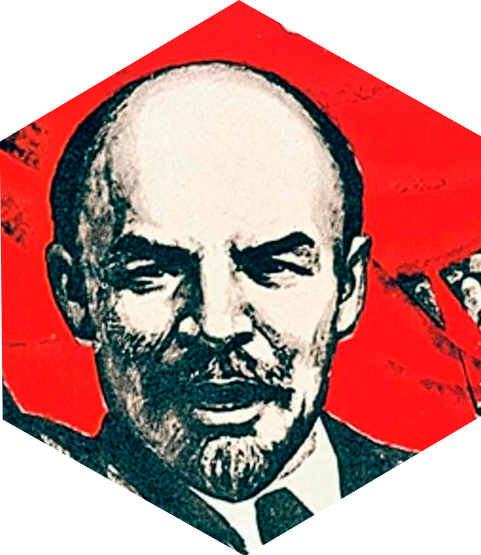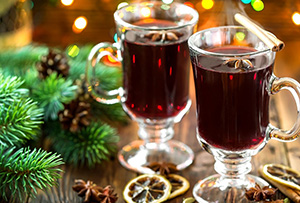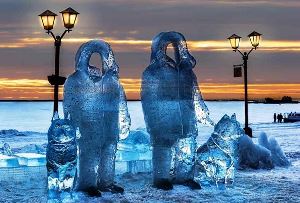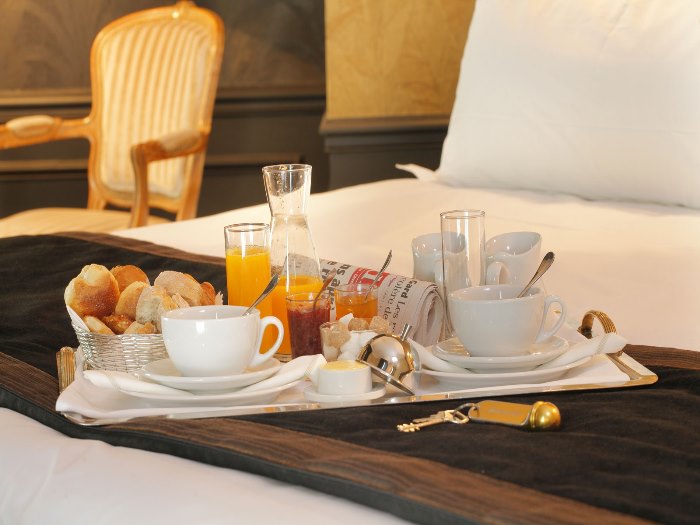- St. Varvara's Church. .
St. Varvara's Church is located on the Bank of tVolga River and was built in 1821 in classicism style. The Interior has been preserved to nowadays, you can see the glue painting of the mid-19th century on gospel topics, with elements of Baroque: "Carrying the cross", "Nailing to the cross", "The Entombment", "Sesurrection". Paintings of life of Christ are framed with ornamental elements. The Church is restored in good condition. The famous Russian artist I.I. Levitan in his work "Evening. Golden Plyos "captured St. Varvara’s Church. The painting is part of the collections of the State Tretyakov Gallery. - Plyos State Historical-Architectural and Art Museum-Reserve.
The Museum represents historical, natural and architectural-landscape complex, which includes an exposition, valuable historical-cultural and natural areas, monuments of history, culture and nature. The Museum brings together almost all the important sights in the territory of this small town and even beyond: the Museum landscape, Memorial House-Museum of I.I. Levitan, Museum and exhibition complex "Presence", the exhibition "Art crafts of the Ivanovo region.» Plyos Museum-Reserve is included in the list of historical and cultural sites of federal importance. - A monument to the founder of the town Vasily I. .
Vasily I was Grand duke of Moscow from 1389, eldest son of Dmitry Donskoy. He is known by policy of Association of Russian lands around Moscow Principality. To it he added Nizhny Novgorod and Murom Principality Ustyug, Vologda, Bezhetsky Verkh. Vasily I have repeatedly led the campaigns of Russian armies against Lithuanians and Tatar-Mongol invaders. - Дом-музей И. И. Левитана.
Дом-музей великого русского художника-пейзажиста Исаака Ильича Левитана открылся в 1972 году 25 августа. Разместился в усадьбе, где ранее проживал купец П. Солодовников. Именно здесь он жил и работал. К нему часто приезжали гости, друзья: Степанов А.С., С. П. Кувшинникова. Путешествуя по Волге, Левитан был вдохновлен маленьким, тихим городком Плёс и создал русские шедевры пейзажной живописи, такие как "Тихая обитель", "После дождя. Плес", "Вечер. Золотой плес", "Березовая роща" и другие. Всего за несколько дней Левитан написал больше 200 работ. На данный момент музей считается лучшим на Волге. - Uspenskiy Cathedral.
It is the most ancient monument of religious architecture of the city, erected in 1699. The temple was winter originally. Before the picturesque architectural complex of Cathedral mountain besides reached us winter Temple included years of Kazan Cathedral. There's a theory that summer Kazansky Cathedral and winter Uspenskiy Cathedral were both a single complex and were depicted in the famous landscapes of Levitan: "Tikhaya obitel" and "Evening bells". Summer Kazansky Cathedral and fence were destroyed during the Soviet era. Winter Uspenskiy Cathedral was able to save. Uspenskiy Cathedral belongs to the widespread in Russia small type of churches with Bell Tower and the refectory on the same axis. - Museum "Russian House".
The Museum shows life in the period leading up to the invasion of the Horde. The creation of the Museum formed results of 20 years of archaeological excavations. One of the houses the Museum belonged to the family jeweler. Jewelcrafting, according to archaeological excavations was one of the main occupations of the inhabitants of the Town until 1238.















